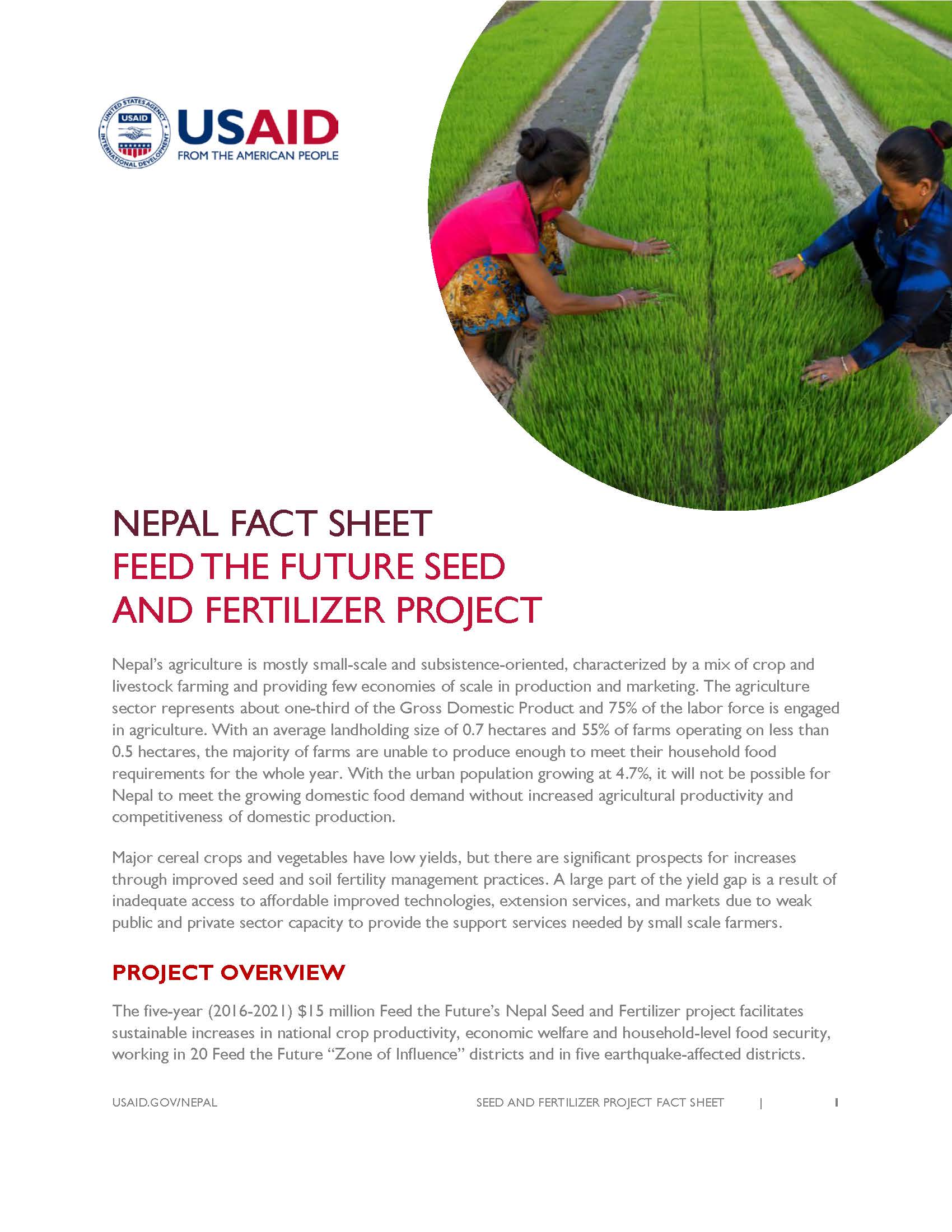Speeches Shim
INTRODUCTION
Nepal’s agriculture is mostly small-scale and subsistence-oriented, characterized by a mix of crop and livestock farming and providing few economies of scale in production and marketing. The agriculture sector represents about one-third of the Gross Domestic Product and 75% of the labor force is engaged in agriculture. With an average landholding size of 0.7 hectares and 55% of farms operating on less than 0.5 hectares, the majority of farms are unable to produce enough to meet their household food requirements for the whole year. With the urban population growing at 4.7%, it will not be possible for Nepal to meet the growing domestic food demand without increased agricultural productivity and competitiveness of domestic production.
Major cereal crops and vegetables have low yields, but there are significant prospects for increases through improved seed and soil fertility management practices. A large part of the yield gap is a result of inadequate access to affordable improved technologies, extension services, and markets due to weak public and private sector capacity to provide the support services needed by small scale farmers.
PROJECT OVERVIEW
The five-year (2016-2021) $15 million Feed the Future’s Nepal Seed and Fertilizer project facilitates sustainable increases in national crop productivity, economic welfare and household-level food security, working in 20 Feed the Future “Zone of Influence” districts and in five earthquake-affected districts.
The project promotes the use of improved seeds and Integrated Soil Fertility Management technologies approved and registered by the Government of Nepal. The Seed and Fertilizer Project will specifically increase availability of technologies to improve productivity in maize, rice, lentils, and high value vegetable farming. The project will work to improve capacity of both the public and private sectors in their respective roles for technology development and its in-country dissemination.
The project is led by the International Maize and Wheat Improvement Center (CIMMYT) and collaborates with different divisions of the Ministry of Agricultural Development (MOAD) and private sector. To effectively reach women farmers and marginalized social groups, the project will also seek value-driven collaboration with USAID’s development partners in raising awareness and improving access to agricultural inputs and services.
KEY RESULTS
The Seed and Fertilizer Project seeks to achieve the following results over the course of five years:
Seed Component:
- Increase accessibility of quality seeds and its adoption by local farmers
- Strengthen seed testing, monitoring, and distribution systems
- Establish a seed development and distribution platform through public-private partnership
- Enhance in-country seed system by strengthening project partners’ capacity
- Develop a national seed information system as a decision making tool to partners of the seed value chain
- Increase business capacity and financial access to seed enterprises
Fertilizer component:
- Increase the capacity of public and private partners for developing and employing ISFM technologies
- Develop and deploy domain-specific ISFM recommendations
- Evaluate and commercialize efficient fertilizer application technologies
- Complete studies of fertilizer demand, welfare outcomes, and market characterization
- Strengthen fertilizer supply chains and markets through private sector engagement, policy experiments, and public-private partnerships
- Scale ISFM through dealers, retailers, cooperatives, and development partners-supported by extension agents


Comment
Make a general inquiry or suggest an improvement.